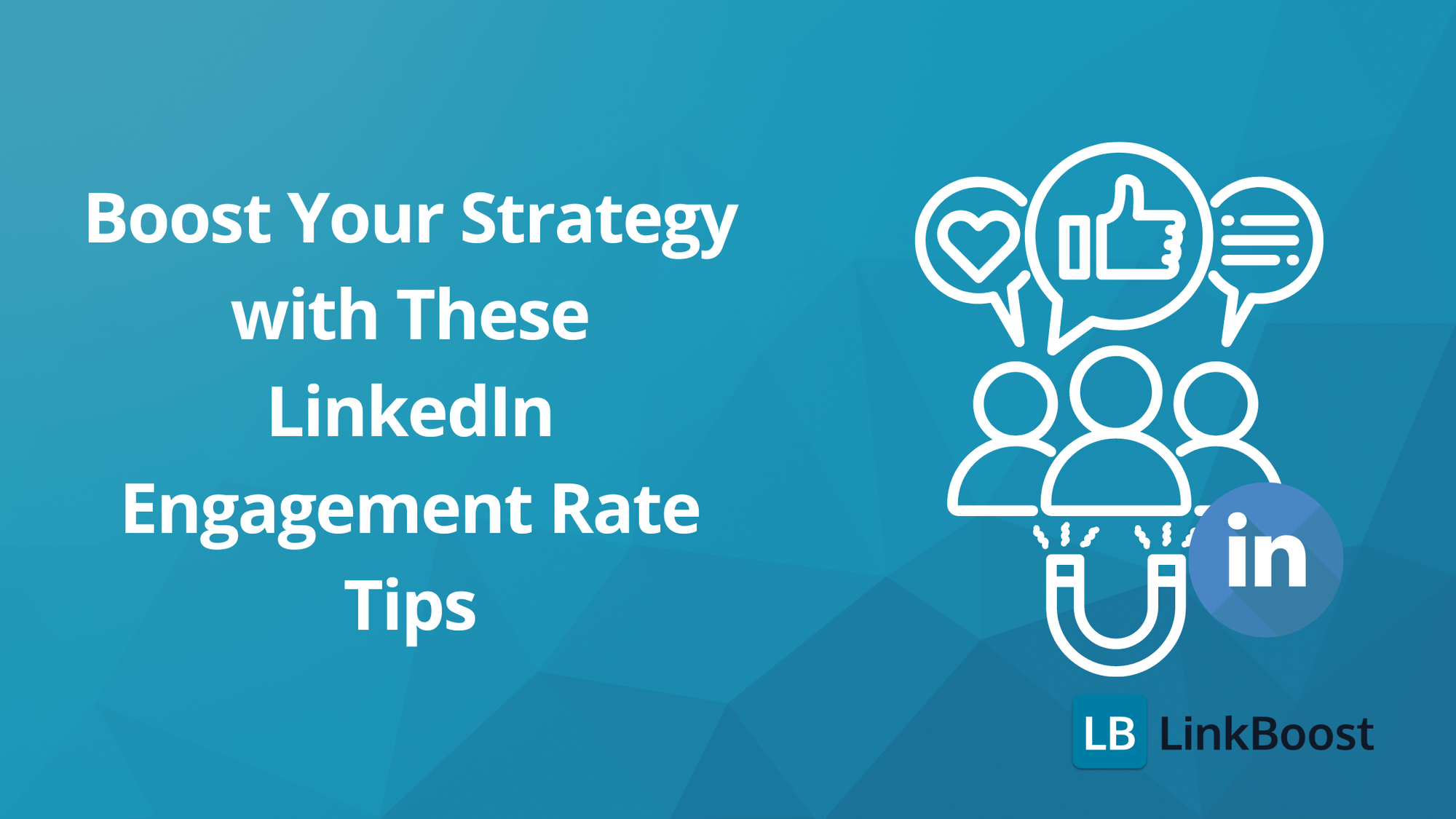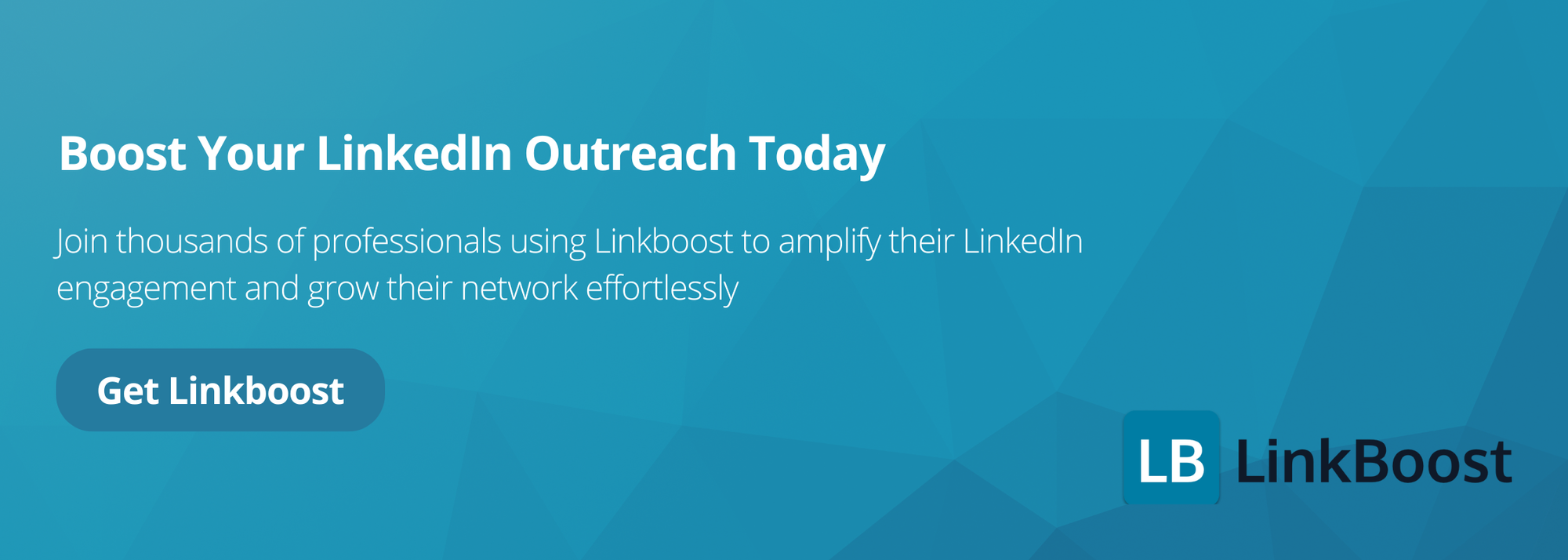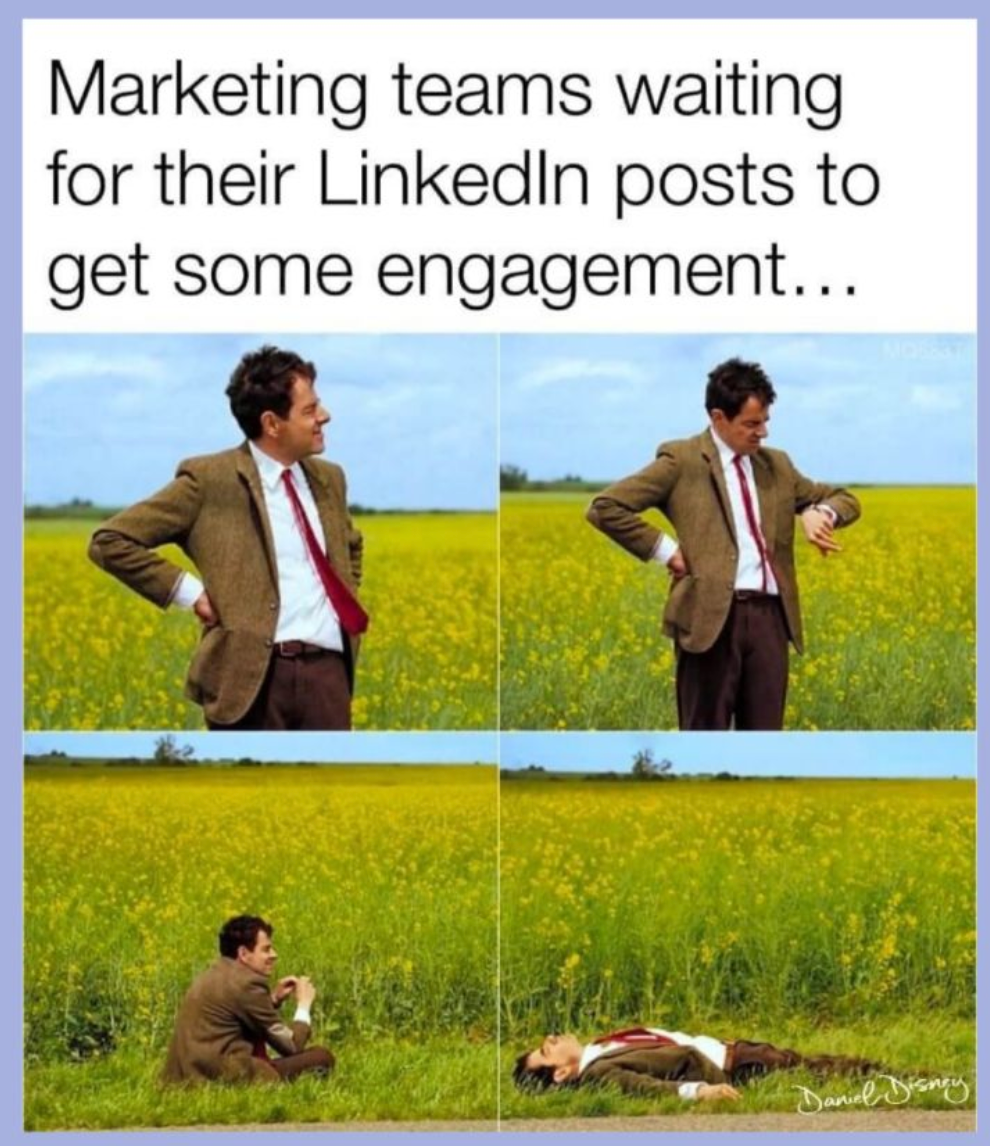Understanding LinkedIn Engagement Rate Meaning to Boost Your Strategy with These Tips

Wondering what your LinkedIn engagement rate measures and why it matters? Your LinkedIn engagement rate, a specific type of social media engagement rate, measures how well your posts are resonating with your audience through interactions such as likes, comments, and shares. In this article, we’ll explain how to calculate your LinkedIn engagement rate, why it’s important for your professional growth, and provide actionable tips to boost it.

Key Takeaways
- LinkedIn engagement rate measures the effectiveness of your content, serving as a key indicator of how well your audience is responding to your posts through interactions such as likes, comments, and shares.
- High engagement rates can boost your visibility on LinkedIn, enhance your credibility and thought leadership, and open up opportunities for networking and lead generation.
- Improving LinkedIn engagement involves strategies such as consistent posting, crafting engaging text-based posts, leveraging native videos, and understanding the performance of different post types.
Understanding LinkedIn Engagement Rate

LinkedIn engagement rate is the pulse of your professional online presence, measuring how effectively your content resonates with your audience. LinkedIn engagement rate measures how effectively your posts engage with your audience through interactions such as likes, comments, and shares. It is a specific type of social media engagement rate, which measures how actively audiences interact with posted content.
It’s a numerical representation of the interactions your posts receive, including likes, comments, and shares, relative to your follower count or post views. This metric serves as a barometer for the health of your LinkedIn marketing strategy, offering invaluable insights into your content’s performance and audience reach.
But why should you care about this seemingly abstract number? A high engagement rate on LinkedIn is like a standing ovation in the digital world. It indicates that your content is striking a chord with your audience, sparking conversations, and encouraging shares. Moreover, it’s a telltale sign that you’re not just shouting into the void, but actually reaching the right people with your message.
Monitoring your engagement rate closely allows you to adjust your content strategy to ensure each post resonates with your audience and supports your professional growth.
Definition of Engagement Rate
The engagement rate is a metric that measures the level of interaction between a social media post and its audience. It is calculated by dividing the total number of engagements (likes, comments, shares, etc.) by the total number of impressions (views) and multiplying by 100. In the context of LinkedIn, the engagement rate is a crucial metric that helps businesses and individuals understand how well their content is resonating with their target audience.
For example, if a LinkedIn post receives 100 likes, 50 comments, and 20 shares, and it has been viewed 2000 times, the engagement rate would be calculated as follows: (100 + 50 + 20) / 2000 x 100 = 8.5%. This percentage provides a clear indication of how engaging the content is to the audience. A higher engagement rate signifies that the content is effectively capturing the audience’s attention and prompting them to interact.
Understanding and calculating your engagement rate is essential for evaluating the success of your LinkedIn posts and overall social media strategy. It allows you to gauge the effectiveness of your content and make informed decisions to enhance your LinkedIn performance.
Importance of Tracking Engagement Rate
Tracking engagement rate is essential for any LinkedIn marketing strategy. It provides valuable insights into the effectiveness of your content and helps you understand what works and what doesn’t. By monitoring engagement rate, you can identify areas for improvement, adjust your content strategy, and increase your online presence.
A high engagement rate can lead to increased visibility, as LinkedIn’s algorithm favors posts with high engagement. This means that your content is more likely to appear in the feeds of your connections and followers, expanding your reach and influence. Additionally, a high engagement rate enhances your credibility, as it demonstrates that your content is valuable and relevant to your audience. This can build trust and establish you as a thought leader in your industry.
Moreover, tracking engagement rate allows you to make data-driven decisions. By analyzing which posts perform well and which do not, you can refine your content strategy to focus on the types of content that resonate most with your audience. This continuous improvement process can lead to better engagement, more meaningful interactions, and ultimately, higher conversions.
In summary, tracking engagement rate is a powerful tool for optimizing your LinkedIn marketing strategy, providing valuable insights that can drive your professional growth and success.
Benefits of Monitoring Engagement Rate
Monitoring engagement rate offers several benefits that can significantly enhance your LinkedIn strategy:
- Improved Content Strategy: By understanding what types of content resonate with your audience, you can create more effective content that drives engagement. Analyzing engagement rates helps you identify the themes, formats, and topics that your audience finds most compelling, allowing you to tailor your content strategy accordingly.
- Increased Visibility: A high engagement rate can lead to increased visibility, as LinkedIn’s algorithm favors posts with high engagement. This means your content is more likely to be seen by a larger audience, increasing your reach and potential impact.
- Enhanced Credibility: A high engagement rate can also enhance your credibility, as it demonstrates that your content is valuable and relevant to your audience. This can build trust and establish you as a thought leader in your industry, opening doors to new opportunities and professional connections.
- Better ROI: By monitoring engagement rate, you can optimize your content strategy and improve your return on investment (ROI). Focusing on high-engagement content ensures that your efforts are directed towards activities that yield the best results, maximizing the efficiency and effectiveness of your LinkedIn marketing efforts.
In essence, monitoring engagement rate provides a wealth of valuable insights that can help you refine your content strategy, increase your visibility, enhance your credibility, and achieve a better ROI. It’s a critical component of any successful LinkedIn marketing strategy.
Why LinkedIn Engagement Rate Matters
In the digital realm of professional networking, your LinkedIn engagement rate is more than just a vanity metric – it’s a powerful catalyst for growth and visibility. LinkedIn engagement rate measures are crucial for understanding how well your content is performing and engaging your audience. A high social media engagement rate, including LinkedIn, indicates audience interest and positively influences brand visibility and algorithmic favorability. When your content garners high engagement, LinkedIn’s algorithm takes notice, rewarding you with increased visibility in user feeds.
This algorithmic boost can exponentially expand your reach, putting your ideas and expertise in front of a wider audience.
But the benefits don’t stop at visibility. A robust engagement rate is a testament to your credibility and thought leadership within your industry. When potential clients or employers see your posts sparking lively discussions and garnering enthusiastic responses, it builds trust and positions you as an authority in your field. This enhanced credibility can open doors to new opportunities, from business partnerships to career advancements, and even more engagement with your audience.
Furthermore, high engagement rates on LinkedIn are a goldmine for lead generation and networking. As your content stimulates conversations, it creates natural touchpoints for connecting with industry experts, potential clients, and like-minded professionals. These interactions can blossom into meaningful professional relationships, expanding your network and creating a ripple effect of opportunities.
In essence, your LinkedIn engagement rate is not just a number – it’s a powerful tool for driving your professional success and brand visibility in the digital age.
Calculating Your LinkedIn Engagement Rate

Understanding how to calculate engagement rate is crucial for measuring the effectiveness of your LinkedIn engagement. LinkedIn engagement rate measures are calculated by dividing the total number of interactions by the number of impressions and multiplying by 100. Calculating LinkedIn engagement rate is similar to calculating social media engagement rate, which measures interactions relative to reach. The formula is straightforward: divide the total number of interactions (likes, comments, and shares) by the number of impressions or views, then multiply by 100 to get a percentage. This calculation gives you a clear picture of how well your content is resonating with your audience relative to its reach.
Let’s break it down with a practical example. Imagine you’ve posted a thought-provoking article that receives 50 likes and 30 comments, and it’s been viewed by 1000 users. Your engagement rate would be calculated as follows: (50 + 30) / 1000 x 100 = 8%. This 8% engagement rate indicates that your post has performed well, generating significant interaction among those who viewed it.
Regularly observing this metric across your content will provide insights into which content types your audience prefers, helping you hone your LinkedIn marketing strategy for optimal results.
Using a LinkedIn Engagement Rate Calculator
A LinkedIn engagement rate calculator is a tool that helps you calculate your engagement rate quickly and easily. It typically requires you to input the total number of engagements and impressions, and then calculates the engagement rate for you. Using a calculator can save you time and effort, and provide you with accurate results.
Several popular LinkedIn engagement rate calculators can help streamline this process. Tools like Keyhole, Hootsuite, and SocialPilot offer user-friendly interfaces where you can input your data and receive instant calculations. These tools not only provide engagement rate metrics but also offer additional insights into your LinkedIn performance, helping you make informed decisions about your content strategy.
For instance, Keyhole allows you to track engagement metrics over time, providing a comprehensive view of your LinkedIn performance. Hootsuite offers detailed analytics and reporting features, enabling you to monitor engagement rates across multiple social media platforms. SocialPilot provides a straightforward engagement rate calculator along with scheduling and analytics tools to help you manage your LinkedIn presence effectively.
By leveraging these tools, you can gain a deeper understanding of your LinkedIn engagement rate, identify trends, and optimize your content strategy for better results. Using a LinkedIn engagement rate calculator is a practical and efficient way to ensure your content resonates with your target audience and drives meaningful interactions.
Setting Realistic Engagement Rate Goals
Setting realistic engagement rate goals is crucial for measuring the success of your LinkedIn marketing strategy. A good LinkedIn engagement rate can vary depending on the industry, target audience, and content strategy. However, here are some general guidelines to help you set realistic goals:
- Average engagement rate: According to a 2020 report by Rival IQ, the average engagement rate on LinkedIn is around 1.22%.
- Good LinkedIn engagement rate: Industry benchmarks suggest that an engagement rate between 1% and 3.5% is considered good.
- Excellent LinkedIn engagement rate: Anything above 2% is often seen as great and indicates strong audience interaction.
Understanding LinkedIn engagement rate measures can help you set realistic and achievable goals for your content strategy.
When setting your engagement rate goals, consider the following factors:
- Industry benchmarks: Research the average engagement rates in your industry to set realistic goals. Different industries have varying levels of engagement, so understanding where you stand can provide valuable context.
- Target audience: Understand your target audience’s demographics, preferences, and interests. Tailoring your content to resonate with them will naturally boost your engagement rates.
- Content strategy: Develop a content strategy that aligns with your goals and target audience. Consistently posting valuable and relevant content will keep your audience engaged.
- Previous performance: Analyze your previous engagement rates to set realistic goals for improvement. Look at what has worked well in the past and build on those successes.
By setting realistic and informed engagement rate goals, you can better measure the effectiveness of your LinkedIn marketing strategy and make data-driven decisions to enhance your performance.
What is a Good LinkedIn Engagement Rate?
When it comes to LinkedIn engagement rates, the question on everyone’s mind is: what constitutes a “good” rate? LinkedIn engagement rate is a specific type of social media engagement rate, and industry benchmarks can provide valuable context for evaluating performance. LinkedIn engagement rate measures provide valuable context for evaluating your performance against industry benchmarks. While there’s no one-size-fits-all answer, industry benchmarks can provide valuable context. Generally speaking, an engagement rate between 1% and 3.5% is considered good on LinkedIn, with anything above 2% falling into the “great” category. However, it’s important to remember that these figures can vary significantly depending on your industry and audience size.
To put these numbers into perspective, let’s look at some industry-specific average engagement rates and their corresponding engagement data:
- Government sector: 1.91% average engagement rate
- Education sector: 1.49% average engagement rate
- Entertainment and media sector: 1.05% average engagement rate
- Financial services sector: 1.28% average engagement rate
- Technology sector: 1.27% average engagement rate
- Healthcare and wellness sector: 1.23% average engagement rate
These figures can serve as useful guideposts as you evaluate your own LinkedIn performance.
It’s also worth considering the Engagement Rate by Follower metric, which measures how active your followers are by analyzing their interactions with your content. This metric provides the average number of engagements per follower on a per-post basis, offering a more nuanced view of your audience’s engagement. By tracking both your overall engagement rate and your Engagement Rate by Follower, you can gain a comprehensive understanding of your LinkedIn content’s performance and make data-driven decisions to improve your strategy.
Tips to Increase Your LinkedIn Engagement Rate

Boosting your LinkedIn engagement rate isn’t just about posting more content – it’s about posting smarter and fostering genuine connections. Improving LinkedIn engagement rate is part of a broader strategy to enhance social media engagement rate, which measures how actively audiences interact with content. Understanding LinkedIn engagement rate measures can help you identify areas for improvement and optimize your content strategy. A multi-faceted approach is key to driving more meaningful interactions on the platform. This involves maintaining a consistent posting schedule to build credibility and show dedication to your audience.
Additionally, actively engaging with your audience in the comments section can significantly improve your engagement rate, creating a two-way dialogue that encourages further interaction. Let’s dive deeper into some specific strategies that can help you elevate your LinkedIn engagement game.
Consistent Posting Strategy
Consistency is the cornerstone of a successful LinkedIn marketing strategy. Maintaining a regular posting schedule not only enhances brand credibility but also cultivates a loyal following ready to engage with your content. Consistent posting helps improve LinkedIn engagement rate measures by keeping your audience engaged and active. This doesn’t mean bombarding your audience with constant updates; rather, it’s about finding the sweet spot between staying visible and providing value with each post.
The key lies in striking a balance between quality and quantity. While consistently posting a higher volume of quality content can help grow your account, it’s crucial not to sacrifice substance for frequency. Remember, consistent posting doesn’t necessarily mean daily posting. The goal is to post when you have valuable content to share and the time to engage with your audience’s responses.
A regular rhythm of insightful, relevant content will become something your followers anticipate and appreciate, resulting in increased engagement and a bolstered LinkedIn presence.
Crafting Engaging Text-Based Posts

When it comes to driving engagement on LinkedIn, the power of well-crafted text-based posts should not be underestimated. The key to creating content that resonates lies in adopting a conversational tone that makes your posts more relatable and engaging. Imagine you’re having a coffee chat with a colleague or friend – this mindset can help you craft posts that feel authentic and invite interaction.
Crafting engaging text-based posts can significantly improve your LinkedIn engagement rate measures.
To effectively use this conversational approach, keep your language simple and clear. Avoid jargon or overly complex terms that might alienate your audience. Instead, focus on creating content that sparks curiosity and encourages discussion. One effective technique is to end your posts with thought-provoking questions that invite your audience to share their opinions or experiences. This not only boosts engagement but also provides valuable insights into your audience’s interests and pain points.
Mastering the art of engaging LinkedIn posts will help cultivate a vibrant community around your profile. If you’re wondering how many posts to create, focus on fostering higher engagement rates and meaningful professional connections rather than a specific number.
Leveraging Native Videos

In the ever-evolving landscape of LinkedIn content, native videos have emerged as a powerful tool for boosting engagement. Unlike shared video links, native videos – those uploaded directly to LinkedIn – enjoy higher visibility and engagement rates on the platform. This preference in LinkedIn’s algorithm makes native videos a crucial component of any robust LinkedIn marketing strategy.
Leveraging native videos can enhance your LinkedIn engagement rate measures by providing engaging and shareable content.
To maximize the impact of your video content, focus on creating short, engaging clips that share industry insights or practical tips. The sweet spot for LinkedIn video content appears to be around 90 seconds, as experts suggest this length drives the best engagement. Remember to optimize your videos for mobile viewing, as many professionals browse LinkedIn on their smartphones. Including captions is also crucial, not only for accessibility but also for viewers who might be watching without sound in public spaces.
Effectively utilizing native video posts can significantly enhance your LinkedIn engagement rate, offering your audience valuable, digestible content that stands out in their feed.
Analyzing LinkedIn Engagement by Post Type

Understanding how different types of posts perform on LinkedIn is crucial for optimizing your content strategy. Analyzing LinkedIn engagement by post type is similar to analyzing social media engagement rate, which helps optimize content strategy. Analyzing LinkedIn engagement rate measures by post type can help you optimize your content strategy. According to the 2024 LinkedIn Benchmark Report, certain post types consistently outperform others in terms of engagement. LinkedIn Live, for instance, takes the crown with the highest engagement rate among all post types. This real-time, interactive format allows for direct engagement with your audience, fostering a sense of connection and immediacy that other post types can’t match.
Following closely behind are photos and articles, which have dominated the engagement charts on social media channels. Interestingly, photos are the most frequently posted type of content on LinkedIn, suggesting that visual content resonates strongly with professional audiences.
When it comes to videos, they average 42 views per 100 impressions, indicating that while they may not have the highest engagement rate, they still offer significant reach. This data underscores the importance of diversifying your content strategy, incorporating a mix of live events, visual content, and in-depth articles to maximize your LinkedIn engagement rate.
Growing Your LinkedIn Audience
Growing your LinkedIn audience is essential for increasing engagement rates and achieving your marketing goals. Growing your LinkedIn audience can positively impact your LinkedIn engagement rate measures. Here are some tips to help you expand your reach and build a robust network on this professional social media platform:
- Optimize your LinkedIn profile: First impressions matter. Ensure your LinkedIn profile is complete with a professional headshot, a compelling background image, and a detailed description of your work experience and skills. A well-optimized profile attracts more connections and followers.
- Publish high-quality content: Share valuable, informative, and engaging content that resonates with your target audience. Whether it’s industry insights, thought leadership articles, or practical tips, high-quality content will draw more followers and encourage engagement.
- Engage with others: Actively participate in LinkedIn groups, comment on posts, and engage with others in your industry. Building relationships through meaningful interactions can significantly grow your network and increase your visibility.
- Utilize LinkedIn advertising: Consider running LinkedIn ads to reach a wider audience. Sponsored content, InMail, and text ads can help you target specific demographics and grow your following more effectively.
- Collaborate with influencers: Partner with influencers in your industry to reach new audiences. Influencers can amplify your message and introduce your profile to their followers, helping you grow your audience and boost engagement.
By following these tips, you can grow your LinkedIn audience and increase your engagement rates, ultimately achieving your marketing goals. A larger, more engaged audience not only enhances your LinkedIn presence but also opens up new opportunities for professional growth and networking.
The Role of Account Size in LinkedIn Engagement
When it comes to LinkedIn engagement, size does matter – but perhaps not in the way you might expect. Contrary to popular belief, smaller accounts often enjoy higher engagement rates compared to their larger counterparts. Here are some statistics to consider:
- Accounts with fewer than 5,000 followers achieve an impressive engagement rate of nearly 6% per view.
- Larger accounts with over 100,000 followers see an average engagement rate of 3% per impression.
- This inverse relationship between account size and engagement rate extends to follower-based metrics as well, with accounts boasting over 100,000 followers earning just a 0.11% engagement rate by follower.
Understanding LinkedIn engagement rate measures can help you tailor your strategy based on your account size.
The advantages of smaller accounts don’t stop at engagement rates. These accounts also tend to earn more impressions per follower than larger ones. Small and mid-size accounts significantly outperform larger accounts in this metric, with smaller accounts averaging about 16 views per 100 followers per post. This suggests that content from smaller accounts may have a better chance of cutting through the noise and reaching their audience effectively.
However, it’s not all bad news for larger accounts. They tend to have an edge when it comes to posting frequency, often publishing content more regularly than their smaller counterparts. But this advantage comes with a caveat: larger accounts generally see lower video views per impression on LinkedIn. While brands with fewer than 5,000 followers average about 49 video views per 100 impressions, larger accounts with more than 100,000 followers average around 35 views per 100 impressions. These insights underscore the importance of tailoring your LinkedIn strategy to your account size, focusing on engagement quality over quantity as your follower base grows.
Case Studies of High-Performing LinkedIn Brands

Examining the strategies of high-performing LinkedIn brands offers valuable insights into effective engagement tactics. High-performing LinkedIn brands often excel in social media engagement rate, which measures how actively audiences interact with their content. High-performing brands often excel in LinkedIn engagement rate measures by targeting the right audience and creating valuable content. One key lesson from successful brands is the importance of identifying and targeting the right target audience. These brands tailor their content to resonate with executive directors, decision-makers, and CEOs - the professionals who can drive business growth. This targeted approach ensures that every post is relevant and valuable to the audience that matters most.
Another crucial strategy employed by top-performing brands is the consideration of geographical location in their LinkedIn marketing efforts. For instance, companies seeking clients in specific regions, such as Malaysia, craft content that speaks directly to the needs and interests of that particular market. Additionally, these brands often position themselves as industry experts by regularly publishing insightful articles and thought leadership pieces. This not only boosts engagement but also establishes credibility and authority within their niche.
By combining these strategies – targeted audience selection, location-specific content, and thought leadership – high-performing brands create a LinkedIn presence that consistently drives engagement and delivers tangible business results.
In the data-driven world of social media marketing, leveraging the right analytics tools is crucial for optimizing your LinkedIn performance. While LinkedIn itself provides basic engagement statistics under the Analytics or Activity tab for company pages, there’s a wealth of third-party tools that can offer deeper insights and more comprehensive analysis.
For those looking for a holistic view of their social media performance, tools like Whatagraph and Klipfolio offer integrations with multiple data sources. Whatagraph is particularly useful for cross-channel performance tracking, while Klipfolio provides highly customizable data reporting with centralized access to dashboards, catering to both analysts and leaders.
For more LinkedIn-specific analysis, Social Champ offers detailed analytics with a focus on engagement metrics and posting time recommendations, while Vaizle provides cost-effective, detailed LinkedIn performance metrics and visitor demographics.
For brands looking to dive deeper into audience sentiment and reach, tools like Brand24 and SentiOne offer valuable insights. Brand24 provides detailed information on sentiment, mentions, reach, and hashtag usage, all accessible in one place, while SentiOne specializes in social listening, sentiment analysis, and competitor monitoring for LinkedIn profiles.
Other noteworthy tools include Inlytics, which allows for content scheduling and provides real-time visualizations of performance metrics, and Keyhole, which focuses on content performance metrics and comparative analytics to find new potential audiences.
Leveraging these analytics tools enables you to gain a comprehensive understanding of your LinkedIn performance, assisting you in making data-driven decisions for continuous improvement of your engagement rate.
Summary
As we’ve journeyed through the intricacies of LinkedIn engagement rates, it’s clear that success on this professional platform is both an art and a science. LinkedIn engagement rate is a specific type of social media engagement rate, which is crucial for amplifying your presence on the platform. LinkedIn engagement rate measures are crucial for understanding and improving your content’s performance on the platform. We’ve explored the fundamental concepts of engagement rates, their calculation, and their crucial role in amplifying your LinkedIn presence. From understanding industry benchmarks to implementing strategies like consistent posting, crafting engaging content, and leveraging native videos, we’ve uncovered a wealth of tactics to boost your engagement.
The key takeaway is that LinkedIn engagement is not a one-size-fits-all metric. It varies based on factors like account size, post type, and industry. However, by consistently applying the strategies we’ve discussed – tailoring content to your target audience, analyzing performance data, and utilizing the right analytics tools – you can significantly enhance your LinkedIn engagement rate. Remember, the goal isn’t just to increase a number, but to foster meaningful connections and conversations that drive your professional growth. As you implement these insights, you’ll not only see your engagement rate rise but also experience the tangible benefits of a more vibrant, influential LinkedIn presence. So, go forth and engage – your professional network is waiting to hear from you!
Frequently Asked Questions
How often should I post on LinkedIn to maximize engagement?
You should aim to post 2-5 times per week on LinkedIn, focusing on providing valuable content rather than just posting frequently. Monitor your engagement rates to find the optimal posting schedule for your audience.
Can I improve my engagement rate by joining LinkedIn groups?
Engaging in relevant LinkedIn groups can indeed improve your engagement rate. Participation allows you to share insights, connect with professionals, and engage in meaningful discussions, but it's important to focus on adding value rather than self-promotion for genuine engagement.
How do hashtags affect LinkedIn engagement rates?
Using 3-5 relevant hashtags per LinkedIn post, including a mix of popular and niche tags, can increase visibility and potentially lead to higher engagement rates. This can help your content reach a wider audience and increase interaction with your posts.
Is it better to focus on increasing followers or improving engagement rate?
It is better to prioritize improving engagement rate over increasing followers. A highly engaged smaller audience is usually more valuable than a large but disengaged follower base, and focusing on quality content can lead to organic follower growth.
How long does it take to see improvements in LinkedIn engagement rate?
You should start seeing improvements in your LinkedIn engagement rate within 1-3 months of consistent application of best practices. Keep refining your strategy based on performance data and audience feedback.

